In the last few years snowshoeing has gotten really popular. And honestly, it’s about time. Basically, snowshoes let you keep hiking all winter long. And unlike skiing, there’s not much to learn. If you can walk, you can snowshoe.
To get started snowshoeing, you need some winter hiking clothes, some snowshoeing boots and of course, you’ll need snowshoes.
But which snowshoes should you buy? How do you know what size you’ll need? How much do they cost? I’ve put together this complete guide on how to choose snowshoes for you.
In this guide, you’ll learn everything you need to know to buy your first pair of snowshoes. I’ll also include my recommendations on the best snowshoes. Here’s what’s in this snowshoe buyers guide:
- Quick-picks: My top three recommendations for the best snowshoes
- How to choose snowshoes for the terrain: flat trails, steep mountains or snowshoe running
- What size snowshoes you should buy: consider your weight, the gear you are carrying, the snow conditions and your gender
- Which snowshoe materials you should choose: plastic snowshoes vs. metal-framed snowshoes
- Which type of snowshoe bindings are right for you: hinged or fixed
- What kind of snowshoe traction to look for: toe crampons, heel crampons, and side traction bars
- What about extra features and accessories: heel lift bars, extension tails, trekking poles, and micro-spikes
- How to shop for snowshoes: the best snowshoe brands, how much do snowshoes cost and what stores should you buy snowshoes from
Hey there: Some of the links in this post are affiliate links, which means I earn a small commission at no extra cost to you if you make a purchase. Thanks for supporting my website! -Taryn
Quick Picks for the Best Snowshoes
Here are my quick picks for the best snowshoes in a few categories:
- Best snowshoes for flat terrain: Atlas Access
- Best snowshoes for mountains: MSR Lightning Ascent
- Best running snowshoes: Atlas Snow Run
Why You Should Trust My Advice
I’ve been snowshoeing most of my life. My dad used to take us out on borrowed snowshoes once or twice a year. Then in my early 20s, I got my first pair of snowshoes and I’ve been going snowshoeing every winter since then.
I also worked in the outdoor industry for seven years. I wrote website descriptions and gear guides for tons of different products. I also wrote training materials for the staff. And one of my areas of expertise was snowshoes. So I know A LOT about snowshoes and which features are actually important.
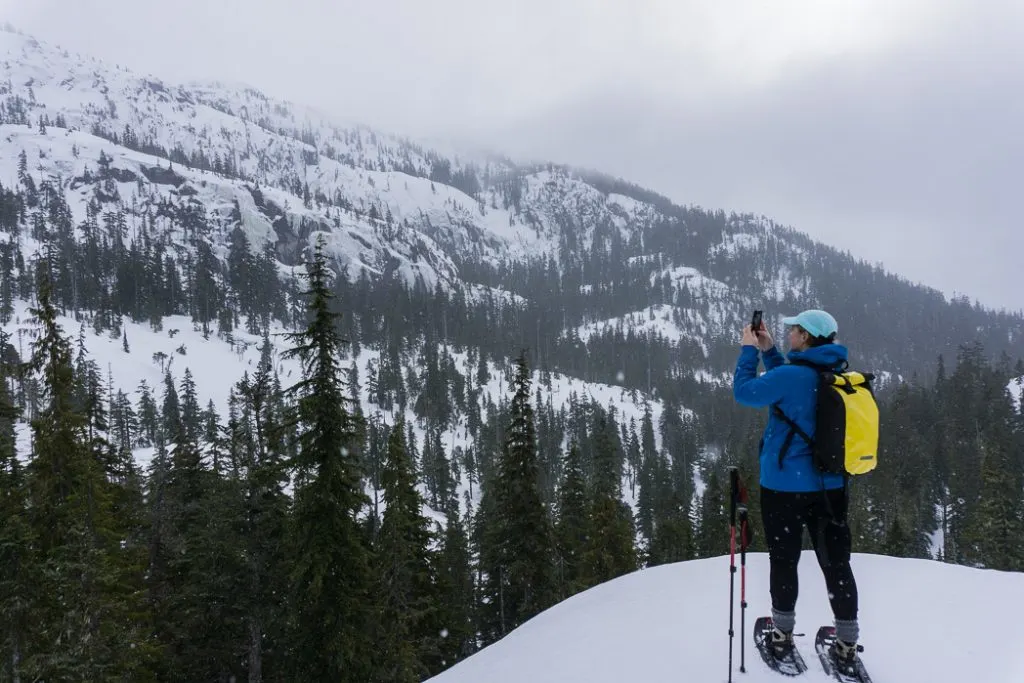
How to Choose Snowshoes for the Terrain
You might think that all snowshoes are the same. Historically, indigenous people built snowshoes to help them walk across deep snow in the rolling hills of what is now Canada.
People still use snowshoes on flat terrain, but they also use them for climbing mountains and snowshoe running. So today, there are actually different kinds of snowshoes designed to suit different types of terrain.
Snowshoes for Flat Terrain
If you plan to snowshoe in an area with flat terrain or gradual hills, you should pick up some all-purpose snowshoes. Flat terrain snowshoes are pretty no-frills, with just the basic features.
They don’t have a lot of traction underfoot so they won’t work well on steep slopes or in icy conditions. Since durability isn’t as important for casual users, they often are made of lower-quality materials.
This means they can be a bit heavy and clunky. However, that means they are usually budget-priced, which is great for beginners who aren’t sure if snowshoeing is the sport for them.
Best Snowshoes for Flat Terrain: I recommend the Atlas Access Snowshoes. They are made with quality materials and have an easy to use binding. The price is also low since they are a basic model.
Check prices:
Snowshoes for Mountainous Terrain
If you’re snowshoeing in the mountains, you will be climbing steep slopes or walking on icy terrain. And you need snowshoes that will keep you safe while you do that. Your life literally could depend on it. If you snowshoe near Vancouver, you definitely need mountain snowshoes.
Backcountry snowshoes have lots of traction to bite into ice and steep snow. They have spikes called crampons under the toes, and smaller tooth-like spikes under the heels and sometimes along the frame.
Mountain snowshoes are lighter than other snowshoes since you’ll be wearing them for a long time. You may also want to strap them to your backpack during an approach hike, and no one wants to carry extra weight.
They also have the most durable construction since a broken snowshoe deep in the backcountry may mean you have no way to get home.
These snowshoes often have fancier features than basic snowshoes such as heel lifts, extension tails, and more comfortable bindings. (I’ve got more details on these features below if you don’t know what I’m talking about.)
Best Mountain Snowshoes: When it comes to mountain snowshoes, you absolutely need to have MSR snowshoes. They are based in Seattle so their snowshoes are designed for climbing steep mountains. If you’re on a budget, the MSR Evo Ascent snowshoes are great. (I’ve had mine for almost 20 years!)
Check prices:
Upgrade Pick:
But if you’re looking for something lighter and a bit more high tech, I love my MSR Lightning Ascents. I upgraded to these a few years ago and wish I had gotten them sooner.
Check prices:
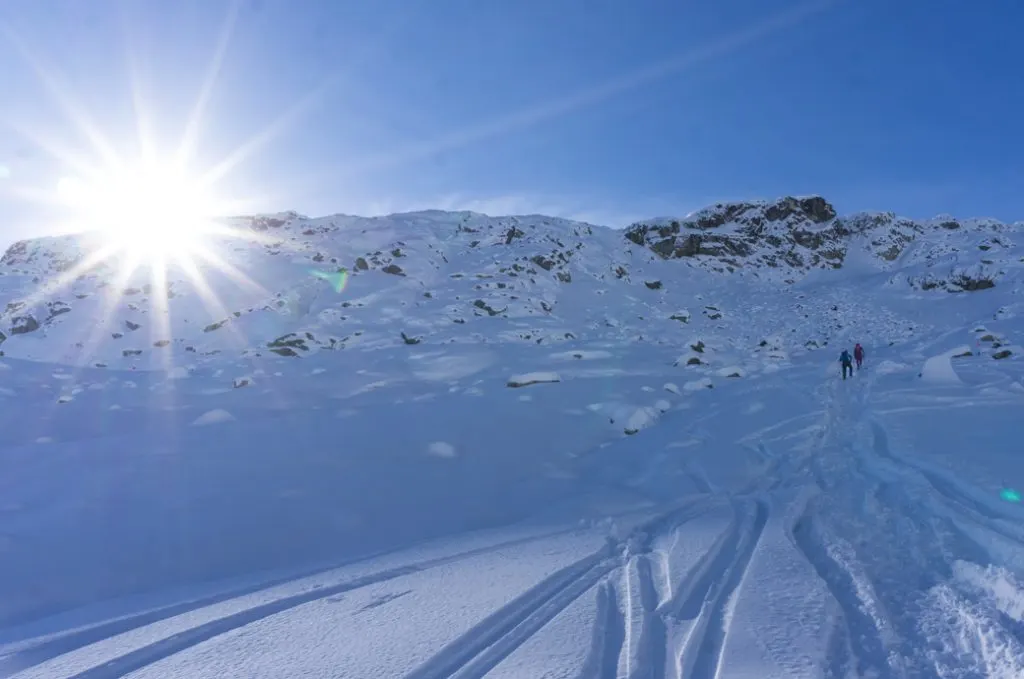
Snowshoes for Running
In the last few years, snowshoe running has grown in popularity. Most people snowshoe run on firm snow or packed trails. Since you need less flotation, they tend to be smaller than other snowshoes.
They are also lighter because it’s exhausting to run with heavy things on your feet. Running snowshoes also have minimal traction since the snowshoe trails aren’t usually icy.
To make sure you don’t whack yourself with your snowshoes with each stride, running snowshoes are generally smaller and have an asymmetric shape. Running snowshoes also have comfortable bindings that won’t pinch or chafe.
Best Running Snowshoes: The running snowshoe market is pretty niche, so there aren’t that many options to choose from. The Atlas Snow Run snowshoes get great reviews and are easily the most popular running snowshoes.
Check prices:
What Size Snowshoes to Buy
Have you ever tried to walk in deep snow without snowshoes? You sink right in, sometimes up to your crotch! But with snowshoes on, you have more surface area to spread out your weight so you “float” on top of the snow instead of sinking.
If you’ve ever wondered how snowshoes work, that’s your answer: they add surface area so you float.
Snowshoes come in different sizes to provide the right amount of flotation for each person’s weight. In general, the widths are similar, but they get longer to provide more flotation.
However, longer snowshoes are less maneuverable, so you’ll need to find the right balance between the two. You’ll also need different levels of flotation for different snow conditions. (You need more flotation in deep powder than on firmly packed trails.)
What Size Snowshoes Do You Need?
Follow the steps below to find the right size snowshoes for you.
1. Determine Your Loaded Weight
This weight isn’t just how much you weigh.
It’s the total weight of you, plus your winter clothes, plus the weight of your backpack. Add up these numbers to get your total loaded weight. Heavier people or hikers with lots of gear will need bigger snowshoes.
2. Use the Size Chart
Snowshoe brands publish recommended weights for each snowshoe size. Look at the size chart to see what size snowshoes they recommend for your loaded weight.
3. Factor in the Snow Conditions
If your region is known for fluffy powder, go up a size for more flotation. If you live in an area with heavy, wet snow or usually snowshoe on hard-packed trails, you can use smaller snowshoes.
4. Consider Women’s Snowshoes
In general women’s snowshoes are smaller than men’s snowshoes since lighter people generally need less floatation. But the biggest difference may be hard to see at first glance: subtle differences in shape.
Women’s snowshoes have a narrower profile and are more tapered. This accommodates the average woman’s stride, which isn’t as wide-set as the average man’s. Narrow snowshoes are also a bit easier to walk in.
The bindings on women’s snowshoes are also smaller. The crampons and underfoot grips are placed to sit under a woman’s smaller feet.
I used unisex snowshoes for years, but switched to these women’s snowshoes a few years ago. So! Much! More! Comfortable!

How to Choose Snowshoe Decks and Frames
There are two main types of snowshoes: molded plastic uni-body snowshoes and snowshoes with an outer frame that supports an inner textile decking.
Plastic Snowshoes
Molded plastic snowshoes are made of one piece of strong plastic with the binding attached to the top. Since you can attach metal crampons or teeth anywhere on the bottom, they also usually have great traction.
They are super durable and waaay less expensive than metal frame snowshoes. Molded plastic snowshoes are really common in rental programs since they are pretty much indestructible. I’ve had the same pair for over 15 years! I’ve replaced the bindings, but the decking is still totally fine.
However, plastic snowshoes are much noisier on icy or hard-packed snow. They also don’t flex as you walk, so your stride won’t feel as natural.
Best Plastic Snowshoes: If you’re looking for plastic snowshoes, MSR Evos are the original version and what I’ve had for nearly two decades. Every other plastic snowshoe out there is a copy.
Check prices:
Metal Frame Snowshoes
By far the most common style of snowshoe uses an outer metal frame that supports a flexible fabric deck. This style of snowshoe is lighter and quieter than plastic snowshoes. However, they are not as durable and they are more expensive.
There are a few different types of material for the decking, but in general, they are all super-durable and flexible synthetic fabrics. Some higher-end snowshoes will use lighter-weight fabrics that shed snow more and stay pliable in colder temperatures, but the average user won’t notice much of a difference.
The outer frames are typically aluminum that is lightweight and flexes slightly when you walk, for a more natural stride. The classic design uses round aluminum tubes, which you’ll find on the majority of metal frame snowshoes.
However, the round bottoms of the tubes are slippery on hard-packed or icy snow, so some snowshoe brands like MSR have started making snowshoe frames out of flat aluminum with teeth on the bottom for better grip. I really prefer this style of frame snowshoes as I think they are a LOT safer.
Best Metal Frame Snowshoes: I really believe that the flat-sided frames are a lot safer. My pick for the best metal frame snowshoes are the MSR Lighting snowshoes since they use a flat frame.
Check prices:
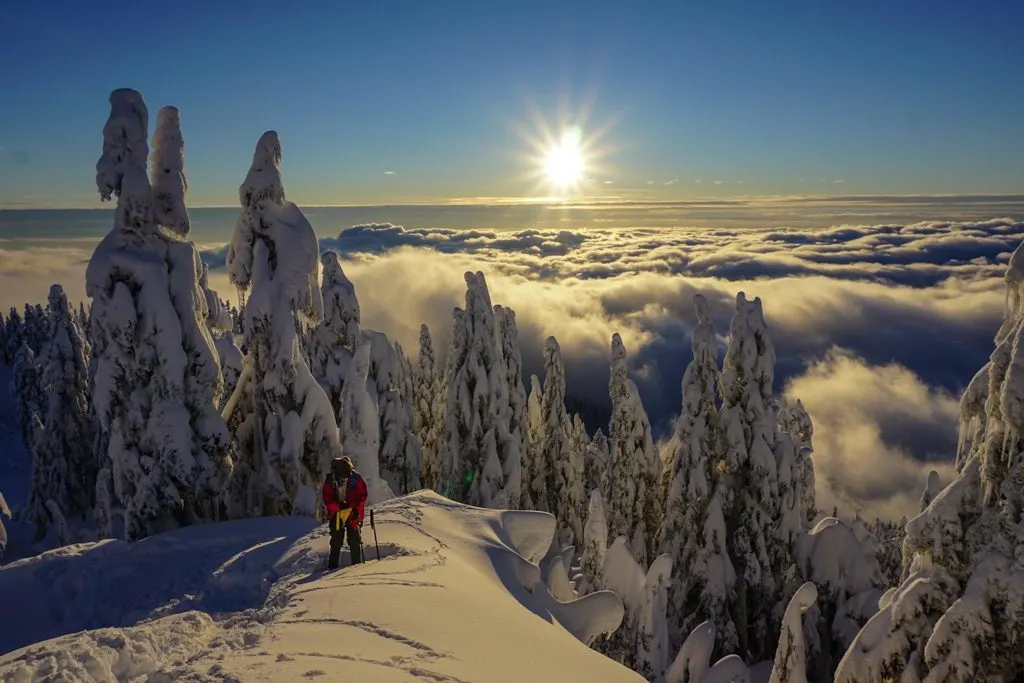
How to Choose Snowshoe Bindings
There are a seemingly infinite amount of snowshoe binding types out there. There are ones with buckles, ones with straps, ones with ratchets, ones with dials… the list goes on.
Most bindings are designed to fit over hiking and winter boots, but some companies make bindings large enough for snowboard boots too.
The snowshoe binding you choose will depend on your personal preference and how the binding fits you. If possible, bring your snowshoeing boots to a store and try on a few pairs of snowshoes to get a feel for each type of binding. Make sure you stand up and feel for pressure points.
It’s also a good idea to pick simple bindings that are easy to operate with gloves on. You don’t want to be messing with complicated adjustments in subzero weather!
The way the snowshoes attach to bindings is also important. There are two types of attachment: fixed and hinged.
Fixed Snowshoe Bindings
Fixed bindings attach to the deck with a flexible, elasticated strap. There’s tension on the strap so the tail of the snowshoe lifts up with each step for better striding efficiency.
However, when the elastic springs back, it can spray snow on you.
Atlas snowshoes use a fixed binding.
Hinged Snowshoe Bindings
Hinged bindings use a pivot to attach the binding to the deck near the ball of your foot. The design is better for climbing over things or kicking steps up a slope, which makes hinged bindings better for backcountry snowshoeing.
But this design does mean that the tail of the snowshoe drags, so it’s not as efficient as a fixed binding.
MSR snowshoes use a hinged binding.
Best Snowshoe Bindings
I prefer the super simple strap and hook bindings on MSR’s snowshoes. It used to be the only binding style they offered, but they have a few more choices now. Currently, you can find these bindings on the MSR Evo and Lightning snowshoes.
How to Choose Snowshoe Crampons and Traction
Traditional wooden snowshoes didn’t have any traction underfoot so they weren’t that helpful for climbing hills or icy trails. Thankfully modern snowshoes have the advantage of crampons and other traction. These are metal spikes and teeth on the bottom of the snowshoe that bite into the snow.
Toe Crampons
All snowshoes have toe crampons, attached under the toe of the binding so they can dig in as you walk. This is the main source of traction. More aggressive snowshoes for the mountains will also have other traction aids such as V-shaped crampons under the heels.
Side Traction
Plastic snowshoes and metal frame snowshoes with flat frames also have teeth along the sides. These are VERY important for off-trail and backcountry snowshoeing since they give you stability when traversing across the side of a slope.
Falls during traverses are one of the most common ways that snowshoers seriously injure themselves since most snowshoes provide NO side traction!
Best Snowshoes with Lots of Traction
MSR snowshoes have the best traction, hands down. They all have great toe crampons and side rail crampons. The lower-end models have a bit less traction than their higher-end ones. But compared to other snowshoe brands, they have waaay more traction overall.
Check prices:
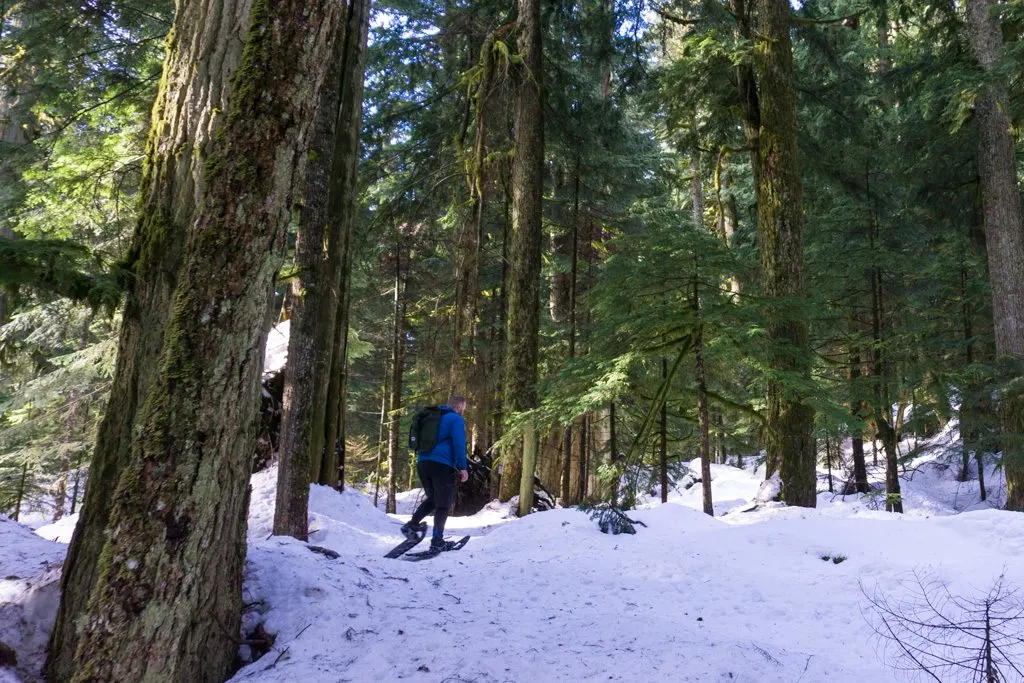
Extra Features to Consider
Heel Lift Bars
If you do a lot of uphill snowshoeing, you’ll appreciate heel lift bars. Basically, they are wire bars that you can flip up to rest your heels on. It gives your calves a break and helps with traction.
But make sure you put them down when you’re on flat ground. Otherwise, it will feel like you’re wearing high heels!
You’ll find heel lift bars on mountain snowshoes, particularly on high-end ones. If you’re buying MSR snowshoes, look for ones with “Ascent” in the name to find snowshoes with heel lifts. Atlas and Tubbs also make snowshoes with heel lifts.
Snowshoe Tails
MSR designs all of their snowshoes to be modular. Basically, they sell tail extensions that let you add extra length (and therefore more flotation) to their snowshoes.
This is great for people who go out in a variety of conditions and need more support on powder days, or winter campers who sometimes need to carry very heavy packs. If you’re shopping for tails, make sure you buy the right ones for your snowshoes as they aren’t a one-size-fits-all kind of thing.
Trekking Poles
You may want to pick up a pair of trekking poles or adjustable ski poles for snowshoeing. I find I feel much more stable when I use them.
I also really appreciate them whenever the route is not totally flat: they add balance on ascents and descents and provide valuable grip on the slope during side-hill traverses.
If you use trekking poles, make sure you get some large winter baskets for them. Otherwise, they will just sink all the way in! I use my Black Diamond Alpine Carbon Cork trekking poles on hiking trails all summer, then switch out the baskets when winter hits.
Micro-Spikes
If you snowshoe in the backcountry you’ll likely get into some pretty steep terrain. Snowshoes are actually terrible for walking steeply downhill or on sidehills. That’s because the platform of the snowshoe gets in the way and the crampon can’t grip the snow.
On really steep slopes, I take my snowshoes off and wear micro-spikes instead. They are low-profile crampons that have stretchy straps to slip on over your boots. I love my Kahtoola Microspikes!
I also have a pair of the Hillsound Trail crampons. They are similar but have an added forefoot strap that helps them stay on better.
What’s the difference between microspikes, crampons, and snowshoes? Read my winter traction device guide to find out.
How to Shop for Snowshoes
The Best Snowshoe Brands
With the increased popularity of snowshoeing, there are TONS of different snowshoe brands on the market.
A few of them are excellent brands making quality snowshoes. A bunch of them are middle of the pack brands that have ok snowshoes, most suited for beginners and flat terrain. And then there are SO MANY terrible snowshoes made of crappy materials that won’t last.
In my opinion, the best snowshoe brands are MSR, Atlas, and Tubbs. If you’re going to buy snowshoes, I strongly advise you to buy from one of these brands.
If you buy from a cheap no-name brand, you’re likely getting snowshoes that will break. The binding straps will crack, the decks will separate from the frames or the crampons will bend.
Just take a minute to read some of the bad reviews of cheap snowshoes on Amazon to get an idea for what can go wrong when you cheap out.
It’s so much better for you and the planet to spend the extra money on a pair of quality snowshoes that you can use for decades instead of buying a new pair every year or two when your crappy ones break. Plus, if your cheap snowshoes break in the backcountry, you may not be able to hike back out!
How Much Do Snowshoes Cost?
In general, snowshoes aren’t cheap – expect to spend about $200 or more. You might be able to find snowshoes on Amazon or at big box stores for less than $100. Stay away! They are made with cheap materials that will bend and won’t hold up.
If you’re a beginner or plan to only snowshoe on flat terrain, you can definitely find snowshoes for less than $200.
But if you want high-end snowshoes that will last and let you tackle challenging terrain, you’ll need to spend more than $200.
If this all sounds too expensive, you can rent snowshoes to try them out. Ski hills and gear shops often have rentals.
You can also buy a used pair of snowshoes. You can usually find them on craigslist, facebook gear buy/sell groups, or from rental places selling off excess inventory. (Psst: Read this post about all the ways to save money on outdoor gear.)
Where to Buy Snowshoes
You can now buy snowshoes in lots of places: big box stores, Amazon, and traditional outdoor stores like REI and MEC. You can even buy snowshoes at Costco.
In general, I think it’s best to buy snowshoes from an outdoor store. They will have the best selection, have staff that can help you choose snowshoes, and usually have a very good warranty.
However, if you are buying quality snowshoes from a reputable brand, buying them elsewhere can also be ok since you know you’re getting a good product.
Final Thoughts
So that’s my HUGE guide on how to choose snowshoes. I hope it’s given you the info you need to buy the right snowshoes for you. If you’ve got more questions about what to look for in snowshoes, leave them in the comments. I’m always happy to chat about gear!
MORE SNOWSHOEING ADVICE:
- The Best Boots For Snowshoeing
- Snowshoeing Safety: 14 Ways to Get into Trouble and How to Prevent Them
- Best Gifts for Snowshoers (20+ Ideas)
- What to Wear Winter Hiking and Snowshoeing
- The Ultimate Guide to Snowshoeing in Vancouver: 10 Places to Go
MORE WINTER HIKING TIPS:
- 9 Tips for Winter Hiking (You Don’t Have to Freeze!)
- Microspikes vs. Crampons vs. Snowshoes: What’s the Difference?
- 17 Ways to Save Money on Hiking Gear
- Best Insulated Skirts to Keep Your Butt Warm on the Trails
- How to Stay Warm in a Tent: Over 40 Tips
- Bowron Lakes Canoe Circuit: 2026 Paddling Guide - November 20, 2025
- 2026 BC Backpacking Reservation Dates You Need to Know - November 20, 2025
- 2025 Black Friday Deals for Hikers - November 19, 2025

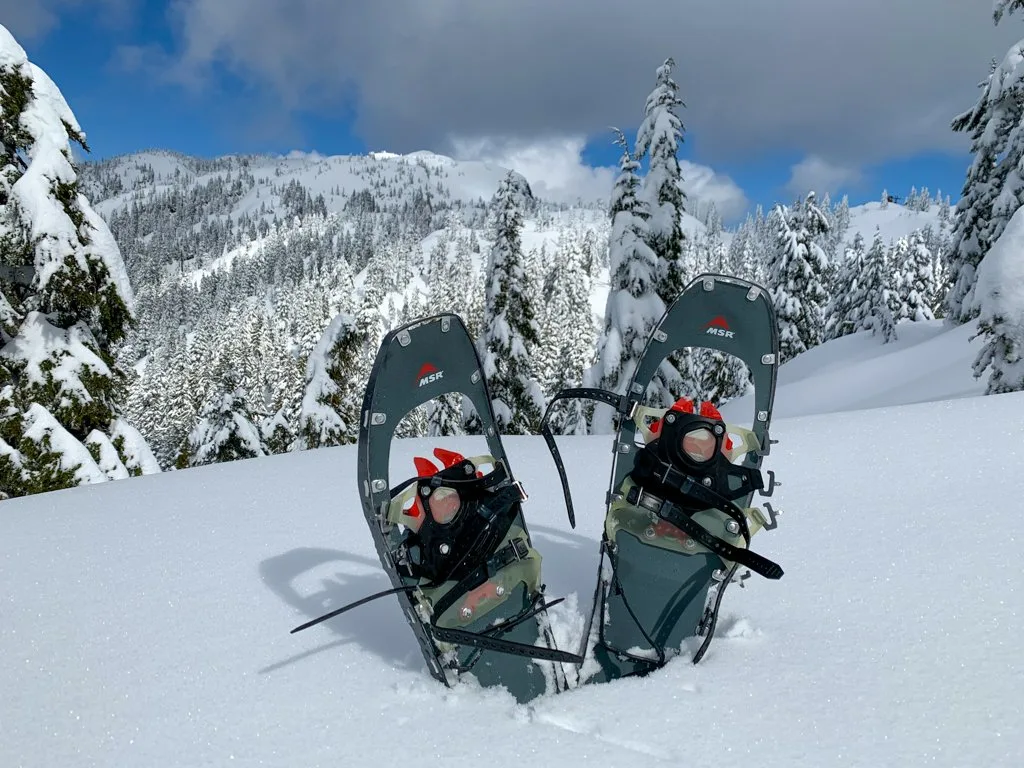
George
Wednesday 15th of November 2023
Hi, thanks a lot for the helpful guide.
I'm looking for snowshoes that will work in deep snow and was leaning towards something like the Tubbs Wilderness 30 inch for that reason. Your recommendation to get MSRs has made me reconsider, but the Evo Trails only come in size 22 inch, and I'm worried that they'll be too small for the job.
I'm not especially heavy but with a pack might come in at around 200 lbs.
Thanks in advance for any advice.
George
Wednesday 15th of November 2023
@Taryn Eyton,
OK, gotcha - appreciate the help!
Taryn Eyton
Wednesday 15th of November 2023
If you are just looking for something for deep snow, the Tubbs will be fine. If you are dealing with steep and icy terrain, I would go with MSRs. If you are on a budget, you can get the Evos and then buy extension tails for them to increase the load they can carry. If you have a bit bigger budget, get the MSR Lightnings as they come in longer lengths.
Marilyn
Sunday 12th of March 2023
Female ooking for new showshoe boots as my Sorel Caribous are too floppy with my new Atlas Mountaneers 25". Tried Womens Columbia Bugaboo Celcius Plus OmniHeat and Womens North Face Chilkat WP400. Both nice. Loved the heftiness and "construction boot fit" of the Chilkat and the rigidity of the shaft on the Bugaboo for the way it would protect the ankles. Unfortunately, part way thru each step, tops of the boot pressed into back of my calves, causing bad pain. Calves are musclar, so maybe too large? Need good ankle support, as warm as my Sorrels, and high tops (not low or med like a hiking boot). 135 lbs, plus 10-15 lbs for boots/clothes/pack/water. Mtns near Park City, Utah. Trails (made by us & others), breaking trail. Powder, packed powder, hard pack, occasional ice, & unfortunately lots of postholes by non-snowshoers that can twist your foot, hence the need for great ankle support. Any suggestions?
Marilyn
Monday 13th of March 2023
Thank you! Had already checked out your awesome boot list & tried on all W's insulated snow boots they had in my size at REI (Chilcat & Bugaboo). Going to Backcountry warehouse (near me) soon to ck W's Oboz Bridger 7" and 9". Any thoughts on these recommended by one of their gearheads? W's Northface Shellista IV Luxe WP and W's Helly Hansen Varanger Prima Loft? Vaya Powder not in stock anywhere I can find. Still hoping to find hightops. Thank you so much!
Taryn Eyton
Monday 13th of March 2023
I have lots of picks for snowshoe boots in this post https://happiestoutdoors.ca/best-boots-for-snowshoeing/ If you are having trouble finding high top boots that fit well, I would advise going to a big outdoors store like an REI and trying on boots. Be sure to walk around in them and wear them on their inclined ramp to see if they have the same problem of digging in to your calf. It may be that all boots are going to dig in to your calf, however. In that case, you may want to switch to a mid height boot. In my experience they still provide decent ankle support.
Mick
Friday 6th of January 2023
Hello- every year we go backpacking in the sierra Nevada mountains though we go in May so often there is lots of weather and a snow pack. It seems very different than walking in fresh powder and Wintory snow do you have recommendations for these kind of conditions?
Taryn Eyton
Friday 6th of January 2023
Spring snow conditions can be tricky. Often the snow is very icy or slush with ice underneath. In those conditions microspikes are probably your best bet. If you encounter a mix of slush (that is deep enough to need snowshoes) and ice, I would recommend MSR snowshoes since they have the best traction for icy conditions. Get the Evos if you want to save money. Get the Lightnings if you want to save weight.
Steve
Tuesday 4th of January 2022
Great article—thank you!
I got some Chinooks this past year that seem every bit as good as the Atlas shoes they’re replacing. I’ll have to spring for MSRs one of these years. I’m curious about you including Yukon Charlie in your list of good shoes. The ones I’ve seen have always seemed really low end.
William
Sunday 21st of February 2021
What about Faber snowshoes which are made in Canada (Quebec) and at first glance seem decent and reasonably priced.
Taryn Eyton
Sunday 21st of February 2021
Faber snowshoes are good quality snowshoes for flat or gently rolling terrain. However, since they have a tubular aluminum frame and not very much traction underfoot, they are not good for steep or icy terrain. I didn't include Faber snowshoes in my guide since they aren't widely available. But I agree that for beginners in flat terrain, they are quality snowshoes for the price.